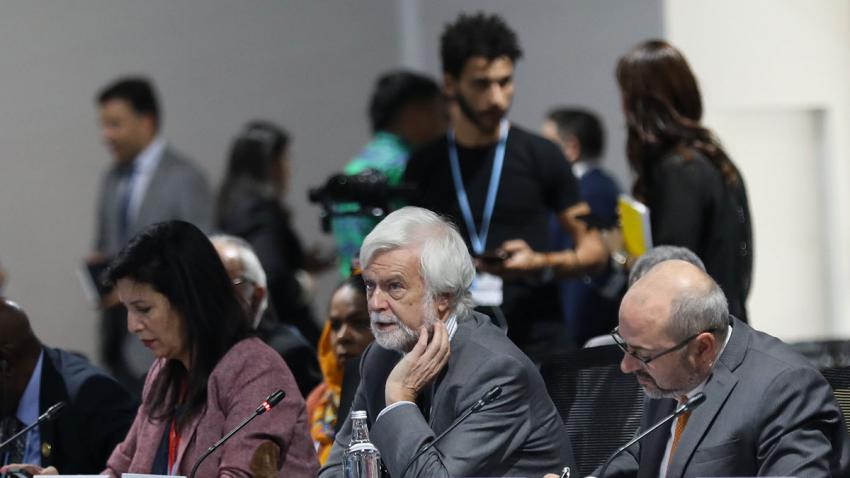In 2015, at the UN Climate Change Conference in Paris, countries agreed to limit global warning to well below 2°C, preferably to 1.5°C, compared to pre-industrial levels. Today, the climate is 1.1°C warmer - and the impact of that change is being felt around the world.
Jim Skea, the co-chair of the Intergovernmental Panel on Climate Change’s Working Group III on Mitigation, talks about advances in efforts to reduce emissions and remove carbon from the atmosphere as well as what happens if the climate warms more than 1.5°C.
Question: Where are we now in terms mitigation?
Jim Skea: Some of the messages are all about despair. We are not going fast enough; there’s an emission gap; there’s an implementation gap. Much progress has actually been made in the last five or six years since Paris.
We've seen big developments in terms of renewable energy costs falling, deployment going up, half the world's emissions are now covered by climate legislation, a fifth of the world's emissions are covered by carbon prices. So people haven't quite used all the tools yet, but they've got the tools on the workbench. And if people have enough willpower to do it, big things can happen.
Question: Should all the focus be on the expected outcome document that gets adopted at the end of COPs?
Jim Skea: What is really important is what happens between the COPs - what happens at the subsidiary bodies, and a lot of the responsibilities, they're not in the halls here. They're back in the capitals where governments need to put in place the measures that you would need to put in place if you're going to stick to the long-term temperature target.
Question: What is your response to the pessimism about keeping to the 1.5°C target?
Jim Skea: Scientifically, we don't fall over the cliff edge if we go over 1.5°C. It’s more of a case that every fraction of a degree of warming matters. So, in terms of the guidance for action, which is where I think it really matters, even if we were not to hit 1.5°C , more mitigation just makes more and more sense because of the avoided impacts, and the co-benefits in terms of sustainable development, and we'll avoid bigger costs in the longer-term.
Obviously, if we go over 1.5°C, it really emphasizes the importance of adaptation. So, on all fronts, every fraction of a degree matters which just leads you to the conclusion we need to up the action on mitigation and up the action on adaptation.
Question: From a science point of view, how do we remove excess carbon from the atmosphere?
Jim Skea: Basically we will never reach net zero if we do not remove carbon dioxide from the atmosphere. Our colleagues working on physical science have showed that very clearly. So the options are available.
It's just staggering the range of techniques there are for removing carbon dioxide. Some are very technological and engineering focused, and some are more nature-based kind of solutions. And I think with a portfolio of carbon dioxide removal options, it's quite possible to actually to get to net zero. Over the last five years, there has been a lot more interest in nature-based solutions, partly as a reaction to some of the risks of the more engineering-based approaches.
Question: Are you concerned about climate delay and the promotion of some fossil fuels as transitional energy?
Jim Skea: We've been quite clear in our reports what needs to happen to fossil fuel emissions and its huge reductions in coal use, medium in terms of oil, and more modest reductions perhaps in terms of gas. For a 1.5°C scenario, gas use has to be 45 per cent lower by 2050. That's a 2 per cent reduction per year and frankly, existing gas fields will deplete faster than that. So, perhaps not as strong a message on gas as on coal and oil, but we do need to exit them but at different speeds - coal which is most carbon intensive we need to do most quickly, then oil, then gas may be in the system for a bit longer.
Read what other prominent Voices from COP27 are saying about the themes, negations and the way forward.




